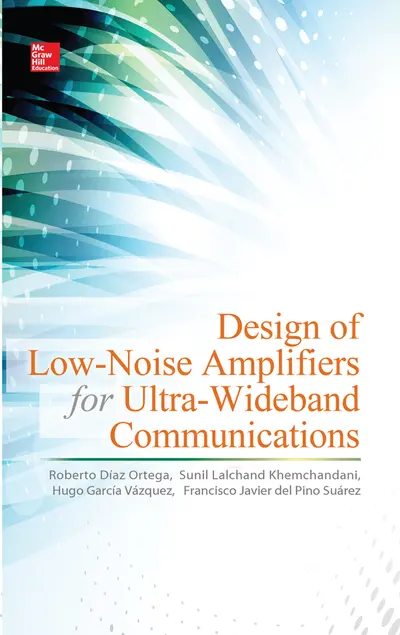My Account Details

ISBN10: 0071823123 | ISBN13: 9780071823128

Step 1 . Download Adobe Digital Editions to your PC or Mac desktop/laptop.
Step 2. Register and authorize your Adobe ID (optional). To access your eBook on multiple devices, first create an Adobe ID at account.adobe.com. Then, open Adobe Digital Editions, go to the Help menu, and select "Authorize Computer" to link your Adobe ID.
Step 3. Open Your eBook. Use Adobe Digital Editions to open the file. If the eBook doesn’t open, contact customer service for assistance.
Publisher's Note: Products purchased from Third Party sellers are not guaranteed by the publisher for quality, authenticity, or access to any online entitlements included with the product.
Cutting-edge techniques for ultra-wideband, low-noise amplifier design
This pioneering resource presents alternatives for implementing power- and area-efficient integrated low-noise amplifiers for ultra-wideband communications. Design methodologies for distributed amplifiers, feedback amplifiers, inductor structures with reduced area, and inductorless techniques are discussed. Cowritten by international experts in industry and academia, this book addresses the state of the art in integrated circuitdesign in the context of emerging systems.
Design of Low-Noise Amplifiers for Ultra-WidebandCommunications covers:
- Ultra-wideband overview and system approach
- Distributed amplifiers
- Wideband low-noise amplifiers
- Feedback wideband low-noise amplifiers
- Inductorless techniques
1 Ultra-Wideband Overview and System Approach
1.1 Introduction
1.2 History of Ultra-Wideband Communications
1.3 ECMA-368/ISO/IEC 26907 Receiver Specifications
1.3.1 Operating Frequency Band
1.3.2 Receiver Sensitivity
1.4 Receiver System Design
1.4.1 Noise Figure
1.4.2 Channel Filter and ADC Specifications
1.4.3 ADC and Frontend Gain Specifications
1.4.4 Automatic Gain Control
1.4.5 Linearity Requirements
1.4.6 Synthesizer Requirements
1.4.7 Budget Simulations
1.5 Conclusions
2 Distributed Amplifiers
2.1 Introduction
2.2 Theoretical Approach
2.3 Area Optimization
2.3.1 Compact Design
2.3.2 Stacked Inductors
2.4 Experimental Results
2.5 Conclusions
3 Wideband Low-Noise Amplifiers
3.1 Introduction
3.2 Wideband Low-Noise Amplifier
3.2.1 Narrowband Inductively Degenerated Amplifier
3.2.2 Wideband Inductively Degenerated Amplifier
3.2.3 Wideband Low-Noise Amplifier Design
3.2.4 Experimental Results
3.3 Flatness Improvement
3.3.1 Circuit Description
3.3.2 Experimental Results
3.4 Wideband Folded Cascode Amplifier
3.4.1 Narrowband Folded Cascode Amplifier
3.4.2 Wideband Folded Cascode Amplifier Topology
3.4.3 Experimental Results
3.5 Conclusions
4 Feedback Wideband Low-Noise Amplifiers
4.1 Introduction
4.2 Circuit Analysis
4.3 Modified Miniatured 3D Inductor
4.4 Circuit Design
4.5 Experimental Results
4.6 Conclusions
5 Inductorless Techniques
5.1 Introduction
5.2 Common Gate LNA
5.2.1 Input Matching and Voltage Gain
5.2.2 Noise of a CG Stage
5.2.3 Differential Operation of CG Stage
5.3 Mixer Design
5.3.1 Quadrature Mixers
5.3.2 Mixers with Current Boosting
5.4 Inductorless Operation
5.5 Experimental Results
5.5.1 Frontend I
5.5.2 Frontend II
5.5.3 Comparison Between Frontends
5.6 Conclusions
Bibliography
Index
Need support? We're here to help - Get real-world support and resources every step of the way.